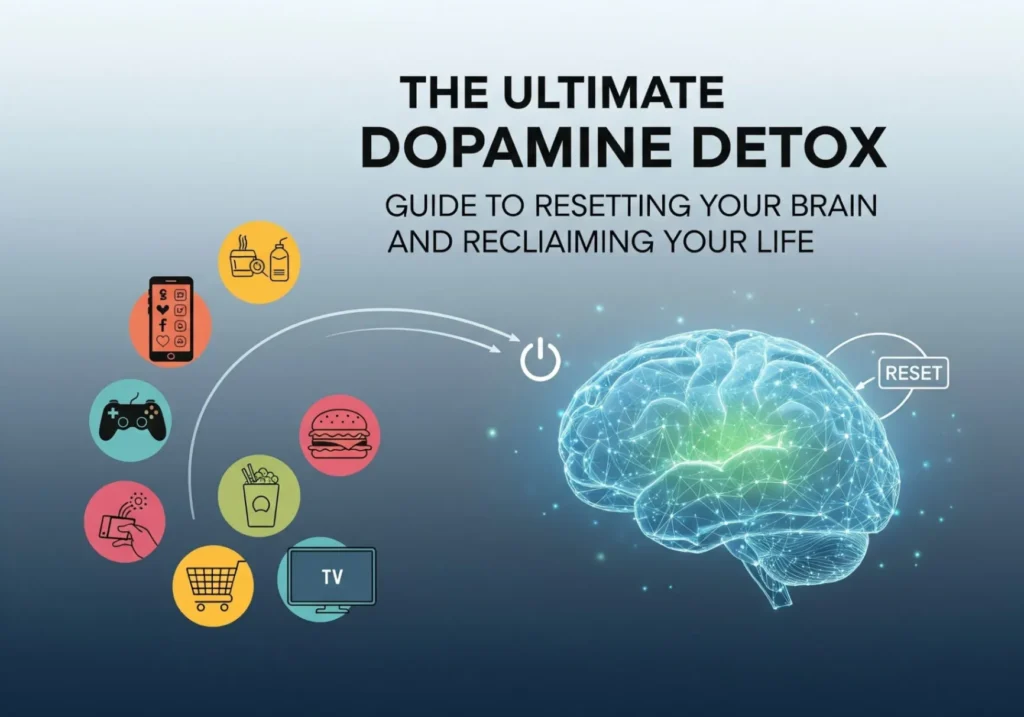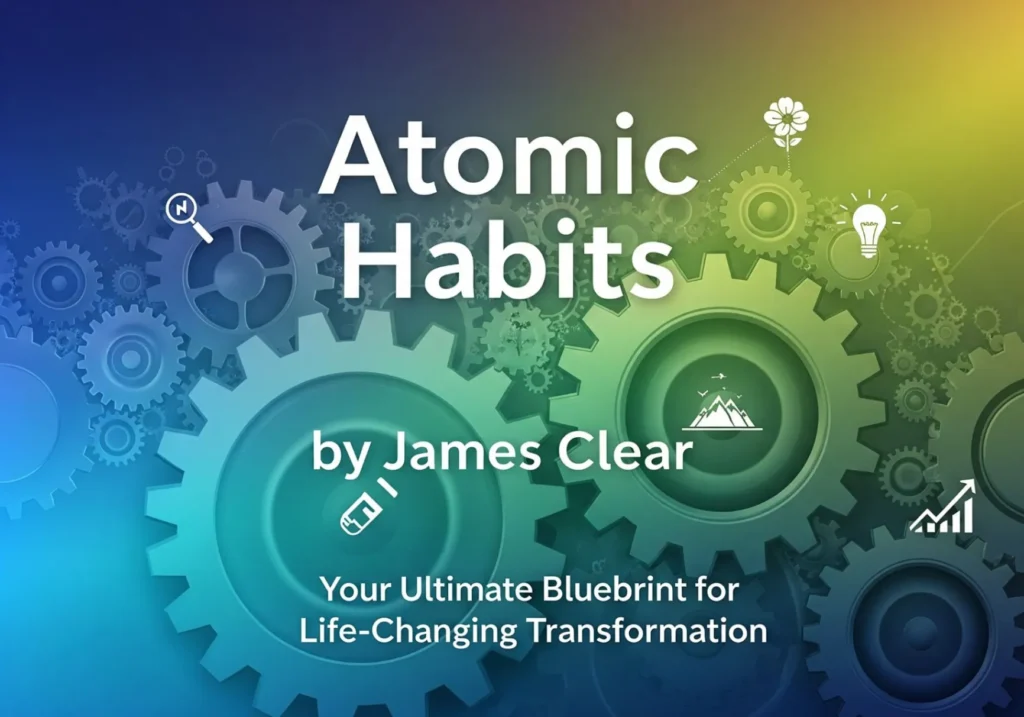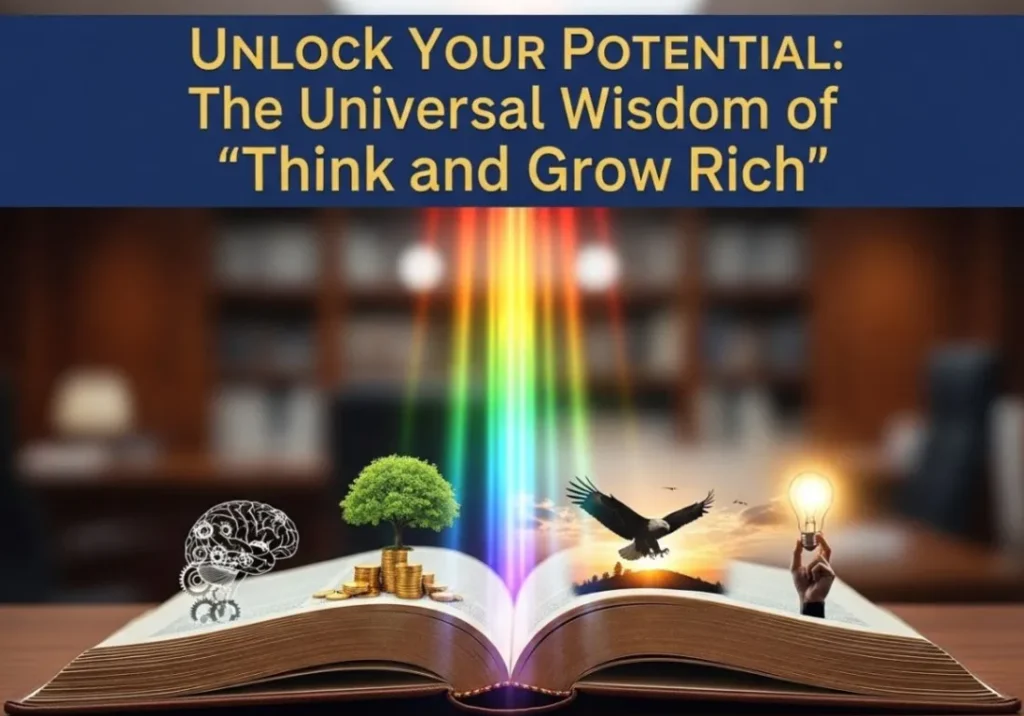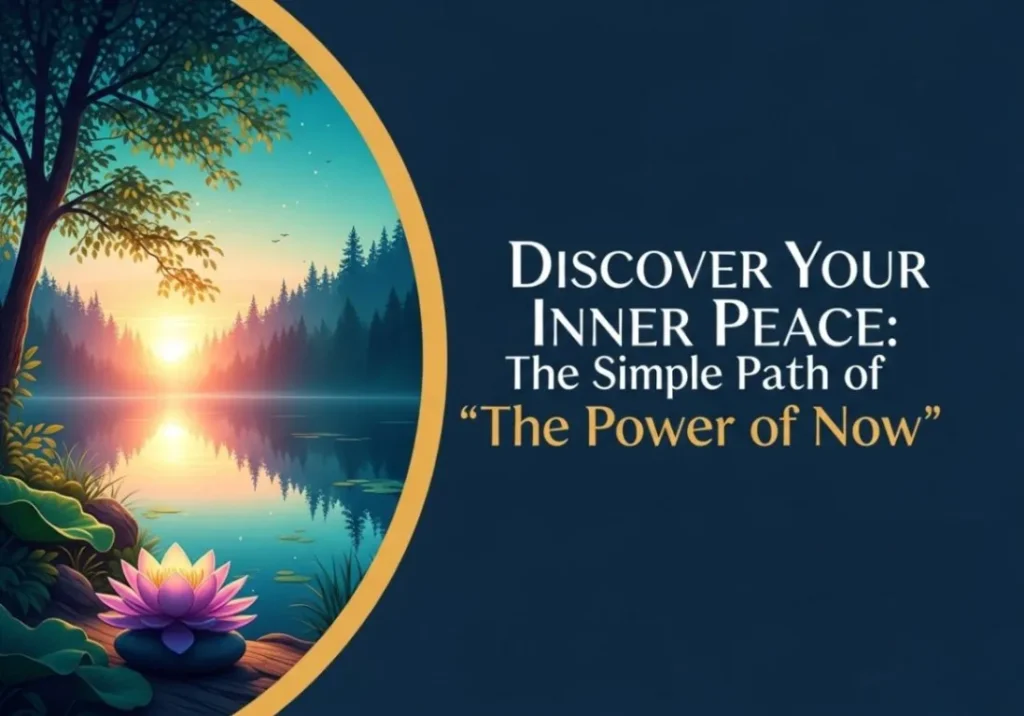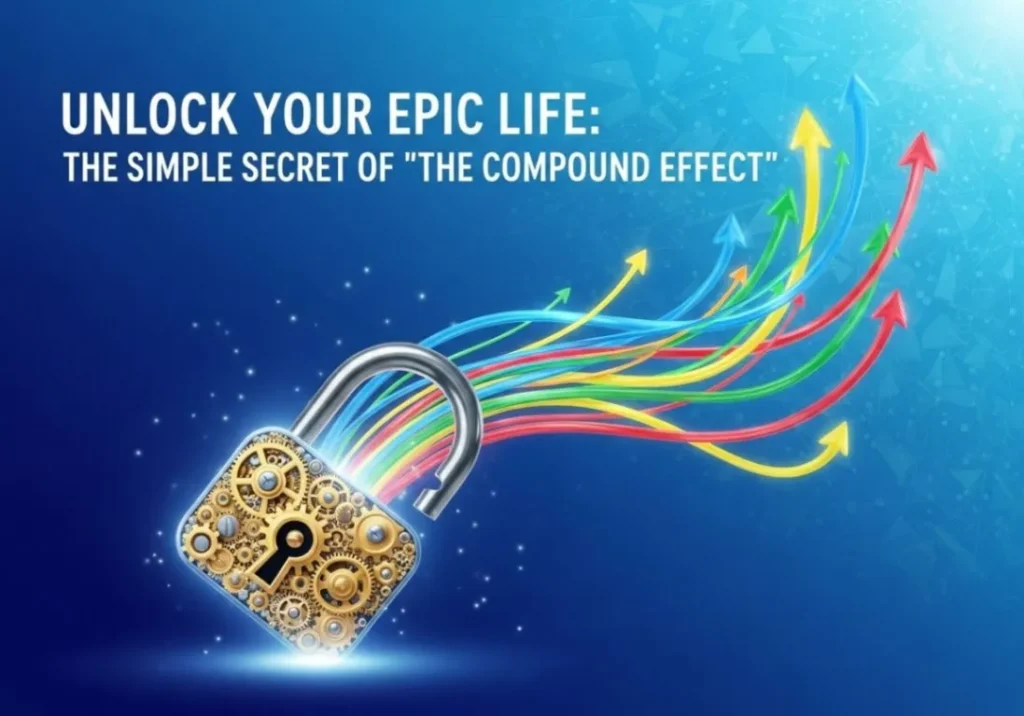The Ultimate Guide to Dopamine Detox: How to Reclaim Your Focus
Who This Guide Is For
If you feel constantly distracted, struggle to focus on important tasks, and suspect your phone has more control over you than you have over it, this guide is your step-by-step plan to reset your brain and reclaim your attention.
The blue light of a screen paints your face in the dark. It’s 11 PM, then midnight, then 1 AM. You know you should sleep, but your thumb has a mind of its own, flicking through an infinite feed of curated perfection, outrage, and fleeting humor.
The next morning, the big project you need to work on feels like climbing a mountain. The book you want to read sits on your nightstand, collecting dust. Instead, you reach for your phone for a “quick check” that turns into 45 minutes of mindless consumption.
If this sounds painfully familiar, you are not lazy or broken. You are a human with a 21st-century brain in a world designed to hijack it. You are overstimulated, and your brain’s natural reward system is completely out of whack.
Welcome to the world of the Dopamine Detox. It is one of the most misunderstood but powerful concepts in modern self-improvement. It’s not about eliminating dopamine (which is impossible), but a deliberate, temporary fast from the cheap, high-dopamine activities that are robbing you of your life.
The Dopamine Deception: Understanding Your Brain’s Reward System
To fix the problem, we first need to understand it. Dopamine isn’t the “pleasure molecule”—it’s the “motivation molecule.” It’s the neurochemical that drives you to seek rewards, getting you off the couch to get a cookie or check that notification.
Think of it like a seesaw. When you get a “like” on Instagram or eat a sugary snack, you get a spike of dopamine. To maintain balance, your brain pushes the other side of the seesaw down, dipping *below* your original baseline. This is the “come down” or craving you feel after the high. To feel good again, you need another hit, often a bigger one.
The Modern World’s Assault on Your Baseline
Our world is a digital candy store. Social media, streaming, and video games provide massive dopamine spikes for zero effort. When you bombard your brain with these easy hits, your baseline level of dopamine drops, making you desensitized. Normal, healthy activities—like reading a book or going for a walk—start to feel “boring.”
Clearing the Air: What a Dopamine Detox Is and Isn’t
Let’s bust some myths. The term “Dopamine Detox,” popularized by Dr. Cameron Sepah, is a catchy name for a therapy technique called “stimulus control.”
It IS NOT:
- Eliminating all dopamine.
- Avoiding all pleasure forever.
- A magic cure for depression or ADHD.
It IS:
- A temporary fast from your vices.
- A way to reset your reward pathways.
- A tool to regain control of your focus.
“The goal is not to make you a Luddite. The goal is to make you an intentional user of technology, to put you back in the driver’s seat of your own brain.”
The Complete How-To Guide: Your Tiered Detox Plan
Step 0: Prepare for Success
Before you begin, identify your vices. What behaviors do you turn to when bored, stressed, or procrastinating? Circle your top 3-5 culprits (e.g., social media, junk food, binge-watching). This is your “Avoid” list. Next, schedule your detox in your calendar and tell a friend to keep you accountable.
Level 1: The Beginner’s 24-Hour Reset
This is the perfect starting point. It’s manageable and will give you a powerful taste of what’s possible. Best done on a Sunday.
AVOID: Your personal “Avoid” list, all non-essential screen time, junk food.EMBRACE: Journaling, reading a physical book, walking in nature (no headphones), light exercise, tidying up, and face-to-face conversations.
Level 2: The Intermediate Weekend Warrior
Ready for a deeper reset? A 48-hour weekend detox allows your brain more time to recalibrate.
AVOID: Everything from Level 1, plus all non-essential internet use, TV/movies, and stimulants like caffeine (if possible).EMBRACE: All activities from Level 1, plus tackling a small project (like cooking a complex meal), extended time in nature, and actively scheduling time to just sit and think.
Level 3: The Advanced “Monk Mode” Week
A profound, transformative experience that requires significant commitment. This is a full-scale assault on instant gratification.
AVOID: All digital entertainment, music/podcasts, processed foods, gossip, and any compulsive behaviors.EMBRACE: A structured daily routine, large blocks of “Deep Work” on a single task, solitude, and mindfulness in every action.
Surviving the Void: How to Conquer “The Wall of Boredom”
At some point, you will hit The Wall—a moment of profound, excruciating boredom where your brain screams for a hit. This is the most important moment of the process. When you push through it, you are literally rewiring your brain for focus.
Strategies to Push Through The Wall:
- Acknowledge the Urge: Notice it without judgment. Say, “Ah, there’s the craving. My brain is healing.”
- Go for a Walk: A change of environment is a powerful pattern interrupt.
- Journal About It: Write exactly what you’re feeling to externalize and manage it.
- Embrace It: Sit with the boredom. See how long you can last. Peace lies on the other side of this discomfort.
The Re-Calibration: How to Re-Enter the World
A detox isn’t a one-time fix. The real challenge is re-integrating technology without falling back into old traps. You must be intentional.
Your Mindful Tech Rulebook:
- Turn Off All Non-Essential Notifications. This is non-negotiable.
- Curate Your Feeds Ruthlessly. Unfollow any account that makes you feel bad.
- Schedule Your Consumption. Set specific time blocks for social media and use a timer.
- Create “No-Phone” Zones. The dinner table and bedroom are now screen-free.
- Switch to Grayscale. Use your phone’s accessibility settings. This makes it instantly less appealing.
- Institute a Weekly Mini-Detox. “Screen-Free Sundays” keep your system clean.
Conclusion: It’s Not About Dopamine, It’s About Life
By intentionally stepping away from cheap stimulation, you are not depriving yourself; you are giving yourself the profound gift of focus. You gain the ability to find deep satisfaction in hard work, to be present with loved ones, and to finally hear your own thoughts.
The question becomes: “What amazing things can I do with this one, precious life when my mind is finally clear?”
Frequently Asked Questions
1. Is a dopamine detox scientifically proven?
The term is pop-culture, but the principle behind it, “stimulus control,” is a legitimate clinical technique used in cognitive-behavioral therapy (CBT) for decades. The neuroscience of dopamine and reward pathways is also extremely well-documented.
2. Can I listen to music? It helps me focus!
For a *strict* detox, the goal is to reduce all external stimuli. Try going without it. When you re-integrate, be intentional. Use music to enhance an activity, not just as constant background noise to avoid silence.
3. What if my job requires me to be online?
You must adapt the detox to your reality. Be surgical. Define the *exact* work-related tasks you must do. Use a separate browser just for work, and use tools to block distracting sites. The detox is about eliminating *compulsive, non-essential* use.
4. How often should I do a dopamine detox?
This is personal. A good rhythm is a 24-hour reset every week or two (like “Screen-Free Sundays”). Then, plan for a longer weekend detox once a quarter. An advanced “Monk Mode” week is a powerful tool to use once or twice a year when you feel particularly burnt out.
